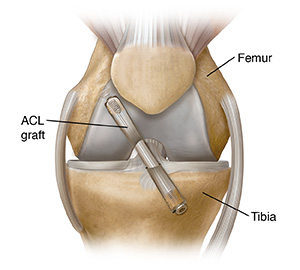Knee Arthroscopy: Conditions Treated
Knee Arthroscopy: Conditions Treated
Arthroscopy is used to find and treat many types of knee problems. These include tears in the meniscal cartilage, joint loose bodies, or anterior cruciate ligament (ACL) tears.

Meniscal cartilage tears
There are several types of meniscal cartilage tears. The meniscal cartilage attaches on the tibia (shinbone) and acts as a shock absorber for the knee. Your surgery will depend on the type and extent of your injury. Your surgeon can remove the damaged tissue or fix the tear. Treatment should ease the pain and swelling. It can also help keep the joint from locking.

ACL tears
A torn ACL (anterior cruciate ligament) can make the knee unstable. You may have pain and swelling, and your knee may give out. Your surgeon can repair the ACL by reconstructing it. To rebuild your ACL, damaged tissue may be replaced with a graft of healthy tissue from an area near your knee, or from a donor.
Updated:
January 20, 2020
Sources:
Canale, ST, Campbell's Operative Orthopedics (2013); 12; pp.2467-2557
Reviewed By:
Joseph, Thomas N., MD,Sather, Rita, RN